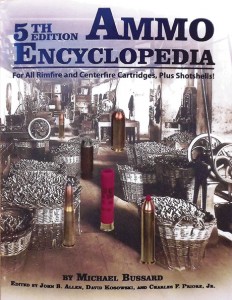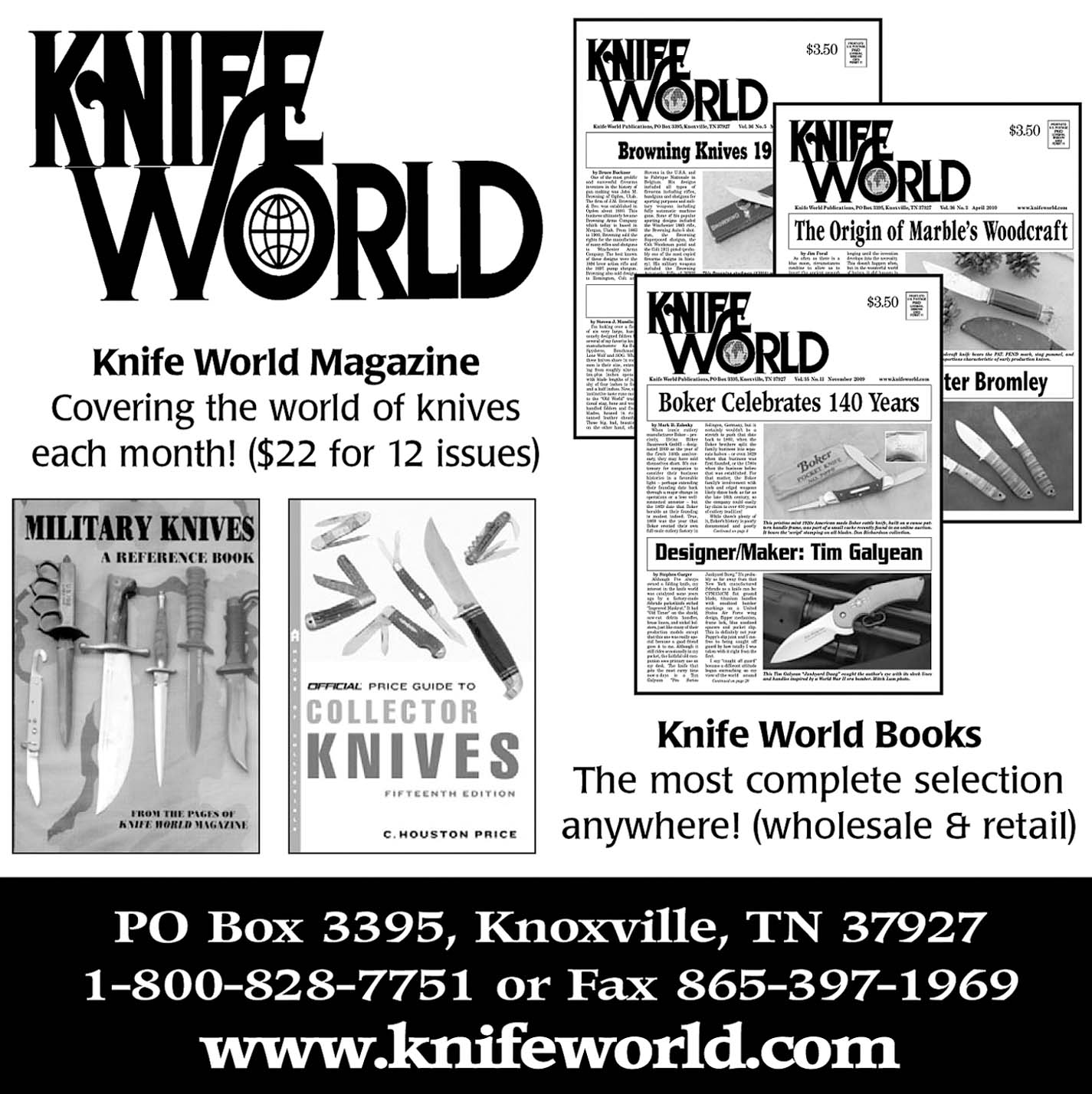Review by Larry S. Sterett | Contributing Editor
 AMMO ENCYCLOPEDIA, 5th Edition, by Michael Bussard. Edited by John B. Allen, David Kosowski, and Charles F. Priore, Jr. ©2014. Published by Blue Book Publications, Inc., Dept. TGM, 8009 34th Avenue S. Ste. 250, Minneapolis, MN 55425. Price: $34.95, plus shipping. Available at most storefront and online bookstores, or from: bluebookofgunvalues.com.
AMMO ENCYCLOPEDIA, 5th Edition, by Michael Bussard. Edited by John B. Allen, David Kosowski, and Charles F. Priore, Jr. ©2014. Published by Blue Book Publications, Inc., Dept. TGM, 8009 34th Avenue S. Ste. 250, Minneapolis, MN 55425. Price: $34.95, plus shipping. Available at most storefront and online bookstores, or from: bluebookofgunvalues.com.
This 1008-page softbound, 4-pound, 2½-ounce tome is the volume on the subject of ammunition—current or obsolete, sporting or military. The first edition was good, and it just keeps getting better. The early errors have been corrected, the illustrations improved and new material added.
Following the usual introductory material, including How to Use This Book, this edition is divided into 18 sections, or 103 chapters, from Defining a Cartridge to Indexes, plus P.S. A Dingbat of Your Own. The first 42 chapters are mainly informational, covering such subjects as What Cartridges Are Used For, ignition and propellant history, nomenclatures, historical perspectives and manufacturing, recommendations for use, storage and shooting safety. (The Ammunition Marketplace Update by the author is especially good, and timely.)
Chapter 41, Dangerous Combinations discusses cartridges which should never be interchanged. Just because a cartridge can be chambered in a particular handgun, rifle, or shotgun does not mean it is safe to shoot. Use of a cartridge in a firearm for which it is not chambered could result in a blown up firearm, serious injury to the shooter, and even loss of life. As the saying goes, such use could definitely be “hazardous to your health.”
The 16-page 43rd chapter consists of actual size examples of all currently known metallic—rimfire and centerfire—cartridges and shotshells in full color. Both sporting and military cartridges are featured, including some of the proprietary calibers, such as Brenneke, Dakota, Holland & Holland, Jeffery, Norma, Rigby and Weatherby. If a cartridge is currently factory loaded it is probably shown in this chapter. If the cartridge is obsolete or a wildcat, it is not shown. The shotshells illustrated include 10, 12, 16, 20 and 28 gauges, plus the .410-bore sizes. The 8-gauge is not illustrated, as it is loaded only for industrial use, and not sporting use. This is an extremely useful chapter for use in seeing what is available, and for aid in identifying a cartridge if the caliber is not head-stamped.
Chapters 44-64 are devoted to ballistics—interior, exterior, and terminal, followed by charts for most of the current and obsolete sporting and military cartridges, including the proprietary designs. There is even data for shotgun slugs in both smoothbore and rifled barrels, in case there’s a desire to compare such ballistics.
Sections X-XIII, or chapters 65-87, feature cartridge profiles, complete with dimensioned drawings, along with a brief history, description, ballistics, and general and technical comments. The first cartridge presented is the .17 Hornet, and the last .20 Wingo Rimfire. The largest of the current sporting cartridges presented is the .700 Nitro Express, which carry a price tag of $125 per cartridge.
The remaining chapters in this great volume are devoted to such topics as wildcats and exotics—trounds, folded, flechette, sabot, etc.—cartridges, preserving older ammunition, a glossary, addresses, trademarks, and brands, a listing of known “no longer in business” ammo firms, clips from some old catalogs, cartridge identification charts, a bibliography, and of course, a cartridge index. There is even a chapter devoted to air rifle pellets—caliber, type, and ballistics.
No book is complete, but this one comes close. The 7.65x38mm Swiss could not be located, and naturally, this shooter’s wildcats—the 8mm Havoc and .440 Havoc, plus a couple of handgun cartridges—are not mentioned, although they have been around for more than four decades, but such is life. This latest edition of the Ammo Encyclopedia is the best yet. Typos, except for a few, and some poor illustrations in some earlier editions have been eliminated, and new material has been added. (It should be noted this is not a reloading or handloading manual, but the dimensioned drawings can be useful in this area.) If a shooter, collector, researcher, or similarly minded individual wants a single book on ammunition, this is the one to have on their reference shelf. It is goooooood!




